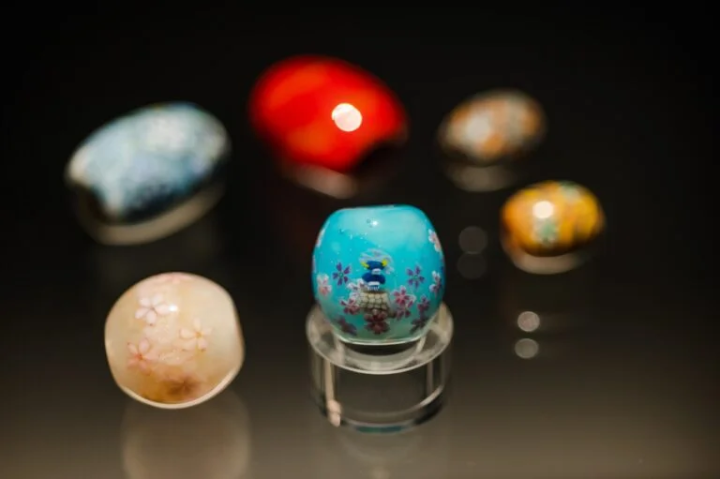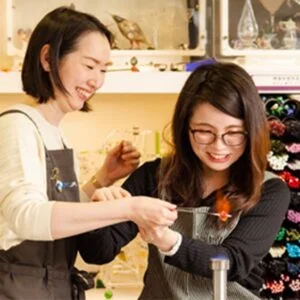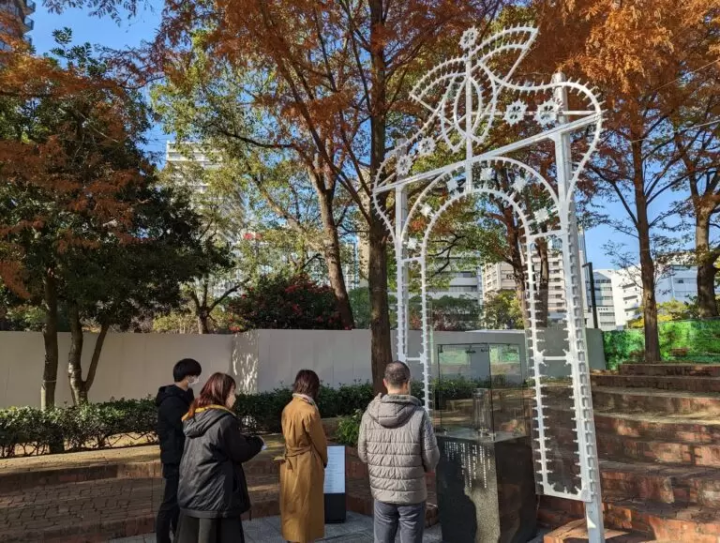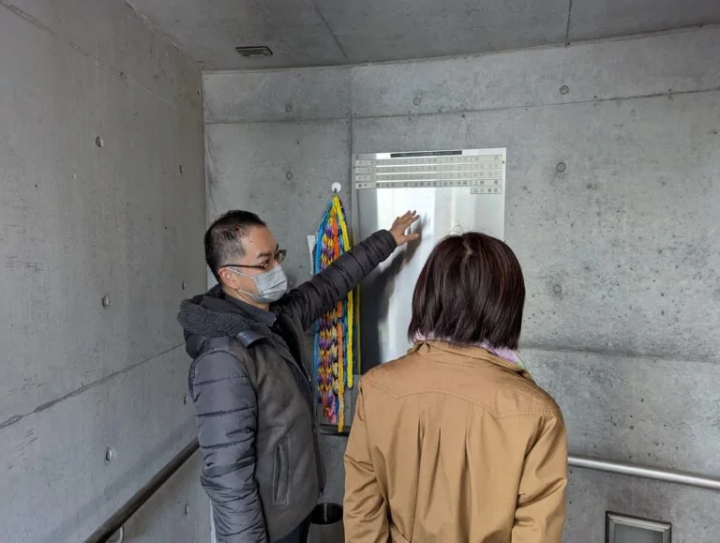[Kobe City] ``KOBE Tonbotama Museum'' tells the story of thoughts about the Great Hanshin-Awaji Earthquake
![[Kobe City] ``KOBE Tonbotama Museum'' tells the story of thoughts about the Great Hanshin-Awaji Earthquake](https://resources.matcha-jp.com/resize/720x2000/2023/12/20-158208.webp)
This is a private art museum that exhibits about 2,000 pieces of glasswork from ancient times to the present, including glass beads. In addition to the exhibition area, the museum also has an experience workshop, which is popular with locals and tourists from Japan and abroad (men and women of all ages, but especially women and children).
-
Table of Contents
- The Great Hanshin-Awaji Earthquake and the Kobe Glass Bead Museum
- Kobe Glass Bead Museum: Earthquake Disaster Recovery Initiatives
- What is the "1.17 Light of Hope"?
- Passing on memories to the next generation
- Great value 1-day pass
- basic information
The Great Hanshin-Awaji Earthquake and the Kobe Glass Bead Museum
January 17, 2023 marks the 28th anniversary of the Great Hanshin-Awaji Earthquake. I was one year old at the time and experienced a magnitude 4 earthquake in Tokushima City. My parents say that even though we were far from the epicenter, the shaking was quite severe.
There are many people whose lives were drastically changed by the Great Hanshin-Awaji Earthquake, and one of them is Miyamoto Yasutsune, director of the Kobe Glass Bead Museum, located in the former foreign settlement in Kobe.
"If there hadn't been an earthquake, I wouldn't be who I am today. I would never have come across glass beads," Miyamoto says, looking back on his life so far.

The Kobe Glass Bead Museum is a private art museum that exhibits about 2,000 glass works from ancient times to the present, including glass beads. In addition to the exhibition area, the museum also has an experience workshop where you can experience making your own original glass beads, making it popular with locals and tourists from Japan and abroad (men and women of all ages, especially women and children).

The name "Glass Bead Museum" might lead you to believe that it is a museum specializing in glass beads, but the museum also exhibits a wide range of items, including spherical marble works that incorporate the artist's unique patterns, glass works made using ancient Egyptian techniques, and intricate glass creatures. This makes it a holy place for glasswork fans from all over the world.
![[Kobe City] ``KOBE Tonbotama Museum'' tells the story of thoughts about the Great Hanshin-Awaji Earthquake](https://resources.matcha-jp.com/resize/720x2000/2023/12/20-158211.webp)
![[Kobe City] ``KOBE Tonbotama Museum'' tells the story of thoughts about the Great Hanshin-Awaji Earthquake](https://resources.matcha-jp.com/resize/720x2000/2023/12/20-158212.webp)
![[Kobe City] ``KOBE Tonbotama Museum'' tells the story of thoughts about the Great Hanshin-Awaji Earthquake](https://resources.matcha-jp.com/resize/720x2000/2023/12/20-158213.webp)
What led Miyamoto to open a museum? Miyamoto used to work at a restaurant run by his parents, but on January 17, 1995, an earthquake measuring 7 on the Japanese seismic scale struck Kobe's Chuo Ward, completely destroying the store. Undaunted by the damage caused by the earthquake, Miyamoto started operating a select shop selling art and craft items on the site. This was the beginning of his fascination with glass beads, which "express the world and universe of each artist in a small piece of glass."
Furthermore, we wanted to spread the appeal of glass art, known as lampwork and particularly glass beads, in a multifaceted way, through the mediums of "viewing," "learning," "making" and "buying." So in 2005, marking 10 years since the Great Hanshin-Awaji Earthquake, we opened the museum as "a museum that conveys the hope for regeneration and creation through glass art."
![[Kobe City] ``KOBE Tonbotama Museum'' tells the story of thoughts about the Great Hanshin-Awaji Earthquake](https://resources.matcha-jp.com/resize/720x2000/2023/12/20-158214.webp)
![[Kobe City] ``KOBE Tonbotama Museum'' tells the story of thoughts about the Great Hanshin-Awaji Earthquake](https://resources.matcha-jp.com/resize/720x2000/2023/12/20-158215.webp)
Kobe Glass Bead Museum: Earthquake Disaster Recovery Initiatives
Kobe Glass Bead Museum, which opened after the earthquake, has been carrying out the following exhibitions and initiatives to continue to convey thoughts about the disaster. For example, we have a permanent exhibition of glass works donated from both within Japan and overseas that express thoughts about recovery, and we invite artists to demonstrate the creation of glass works that contain messages of remembrance.
Also, for a limited time every January, they accept people to experience making glass beads using a portion of the light from the "1.17 Light of Hope" at Higashiyuenchi Park as the fire used to melt the glass. (100 yen for each glass bead sold is donated to the NPO "1.17 Light of Hope" for the Great Hanshin-Awaji Earthquake.)
![[Kobe City] ``KOBE Tonbotama Museum'' tells the story of thoughts about the Great Hanshin-Awaji Earthquake](https://resources.matcha-jp.com/resize/720x2000/2023/12/20-158216.webp)
![[Kobe City] ``KOBE Tonbotama Museum'' tells the story of thoughts about the Great Hanshin-Awaji Earthquake](https://resources.matcha-jp.com/resize/720x2000/2023/12/20-158217.webp)
![[Kobe City] ``KOBE Tonbotama Museum'' tells the story of thoughts about the Great Hanshin-Awaji Earthquake](https://resources.matcha-jp.com/resize/720x2000/2023/12/20-158218.webp)
One day, a person who lost their mother in the earthquake disaster came to visit the museum. The person made a necklace out of the glass beads they made at the "1.17 Light of Hope" event, and was overwhelmed by how it reminded them of their mother by wearing it.
What is the "1.17 Light of Hope"?
I would like you to know about the "1.17 Light of Hope" in Higashiyuenchi Park. Higashiyuenchi Park is a park in the center of Kobe city that is used not only as a place of relaxation for Kobe citizens, but also as a venue for earthquake-related events such as the "Kobe Luminarie" and the "1.17 Gathering for the Great Hanshin-Awaji Earthquake."
On the premises, the "Monument of Memorial and Reconstruction" was erected on January 16, 2000, with the aim of memorializing the victims of the disaster, encouraging the citizens, and spreading the message of reconstruction after the disaster to the world. When the "Monument of Memorial and Reconstruction" was being constructed, bereaved families and volunteers suggested lighting a light as a symbol of "kindness," "compassion," and "proof of life," and thus the "1.17 Light of Hope" was born.
Here, a flame made up of flames that were carried through the 10 affected cities and towns, as well as flames sent from all 47 prefectures, is lit. An inscription is engraved on the "1.17 Light of Hope," which continues to send out "a message to those who lost their lives in the earthquake and to those of us who survived."

![[Kobe City] ``KOBE Tonbotama Museum'' tells the story of thoughts about the Great Hanshin-Awaji Earthquake](https://resources.matcha-jp.com/resize/720x2000/2023/12/20-158220.webp)
Passing on memories to the next generation
I believe that the "Memorial and Recovery Monument" and the "1.17 Light of Hope" not only serve as a memorial to those who fell victim to the earthquake disaster, but also play an important role in encouraging those of us who are left behind to think about "life" and "loved ones," and what we can and should do every day to protect the irreplaceable things that we have.
However, in today's society where things change so rapidly, it is difficult for us to be conscious of this in our daily lives. That is why we need storytellers like Miyamoto who do not leave tragedies as tragedies but continue to tell us about them.
As director of the Glass Bead Museum, which was established in response to the Great Hanshin-Awaji Earthquake, Miyamoto aims to keep the memories of those affected by the disaster burning in their hearts.
In addition, we believe that it is necessary to constantly communicate the memory of the disaster so that it does not fade away, so we are planning to hold a glass bead making experience using a portion of the "1.17 Light of Hope" and a lecture by Miyamoto about his experience of the disaster throughout the year. (We will also start taking reservations on Local Prime as soon as the conditions are met.)
As with wartime experiences, if there is no one to pass on the stories of past tragedies, their feelings will fade and be forgotten. From the end of 2022, Miyamoto plans to hand over the museum he created and his efforts to date to his second son, who is 24 years old. Pass on the feelings to the next generation. So that young people like them can shoulder the future of Kobe, which has overcome the earthquake disaster.
Miyamoto-san gives us opportunities to think about the earthquake disaster not only on January 17th but on a regular basis through various means such as glass bead making experiences and exhibitions of his works.
Please come to the Kobe Glass Bead Museum and experience the passion that goes into their glasswork.

Click here to book an experience that includes admission fees
(Writer: Buyer Mizumoto)
Great value 1-day pass
Kobe 1-day bus ticket
This bus ticket allows unlimited use of the City Loop and Port Loop buses that run through Kobe city for 800 yen per day. If you're planning on touring Kobe's tourist sites, use this ticket for an easy and comfortable trip.
Hyogo Amazing Pass
If you are considering touring around Himeji and Hyogo prefecture in addition to Kobe, we recommend this ticket! This mobile ticket includes the contents of the Kobe 1-day bus ticket and allows unlimited rides on Shinki Bus route buses for 2,500 yen a day.
basic information
Kobe Glass Bead Museum Address: 2nd floor, Nippon Building, 79 Kyomachi, Chuo-ku, Kobe, Hyogo 650-0034
Access: 8 minutes on foot from Sannomiya (Kobe-Sannomiya) Station or Motomachi Station on all lines; 2 minutes on foot from the City Loop bus stops "Kyomachisuji" and "Kyukyoryuchi (City Museum)" Opening hours: 10:00-19:00 (last entry at 18:45)
Closed: New Year's holiday, December 31st to January 2nd
What are good things and good experiences? There are many characteristics such as having a story to tell, overflowing with the thoughts of the creator, having a history, and being loved by the locals. Have you ever come across a special thing or experience that made you want to tell someone about it? And as a result of telling, someone new leads to something. We think that's what "good" is all about. In order to deliver such encounters to our customers, we discover Hyogo's good things based on the concept of "talk, communicate, and connect", and provide information that will shorten the emotional distance between customers and the region of Hyogo Prefecture.
The contents on this page may partially contain automatic translation.


![[Kobe City] A one-day bus ticket is a great deal if you want to visit Kitano Ijinkan-gai, Nankin-cho, and other famous spots in Kobe!](https://resources.matcha-jp.com/resize/200x2000/2023/09/25-146866.webp)
![[Hyogo Prefecture] Unlimited rides on local buses for just 2,500 yen! Travel around Hyogo Prefecture at a great price](https://resources.matcha-jp.com/resize/200x2000/2023/09/25-146913.webp)
































![[Corporate Visit List] Near Kansai Airport! Discover Japan’s Technology and Business Philosophy through Industrial Tourism](https://resources.matcha-jp.com/resize/720x2000/2024/12/13-215168.webp)
![["Secret Beauty: The Complete Works of Komura Setsutei" ~ March 1, 2026] "Abeno Harukas Art Museum"](https://resources.matcha-jp.com/resize/720x2000/2026/01/09-255274.webp)